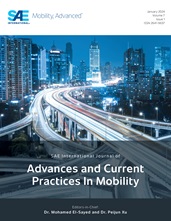Vehicle interior wind noise is typically managed through the overall exterior geometry of the vehicle, mirror shape and mounting location, sealing features and glass thickness and damping. Prior research has distinguished between contribution of fluctuating pressure due to air turbulence as compared to acoustic pressure to a passenger vehicles exterior at highway speeds. Because of the large difference in propagation speed between turbulent and acoustic pressure for on-road passenger vehicles, the structural response of the glass to turbulent versus acoustic pressure is not the same. The acoustic coincidence frequency of door glass is typically in the 2-3 kHz range. Turbulent coincidence frequency is much lower, and the effective transmission loss (TL) of the glass depends on the mix of turbulent and acoustic pressure on the exterior surface of the glass. Structural changes to the perimeter of the glass itself can reduce turbulent sensitivity, which, at highway speeds, can reduce low frequency noise due to turbulent pressure excitation of door glass vibration modes.
